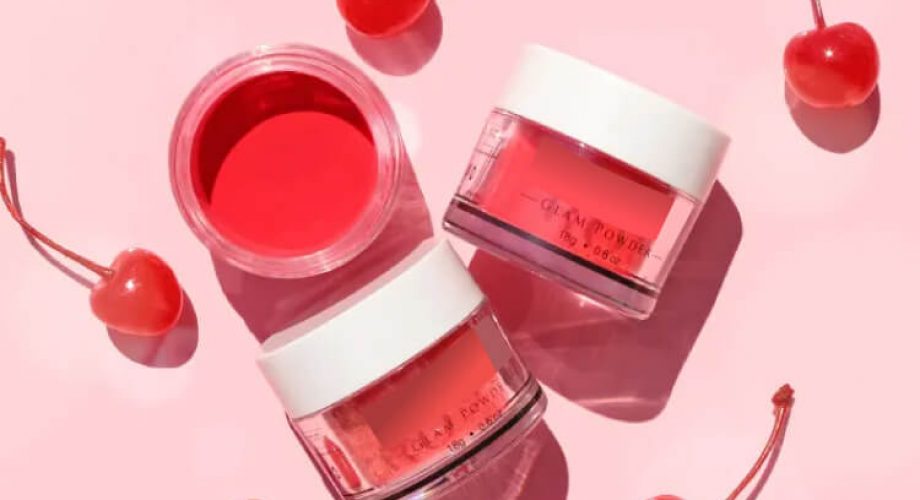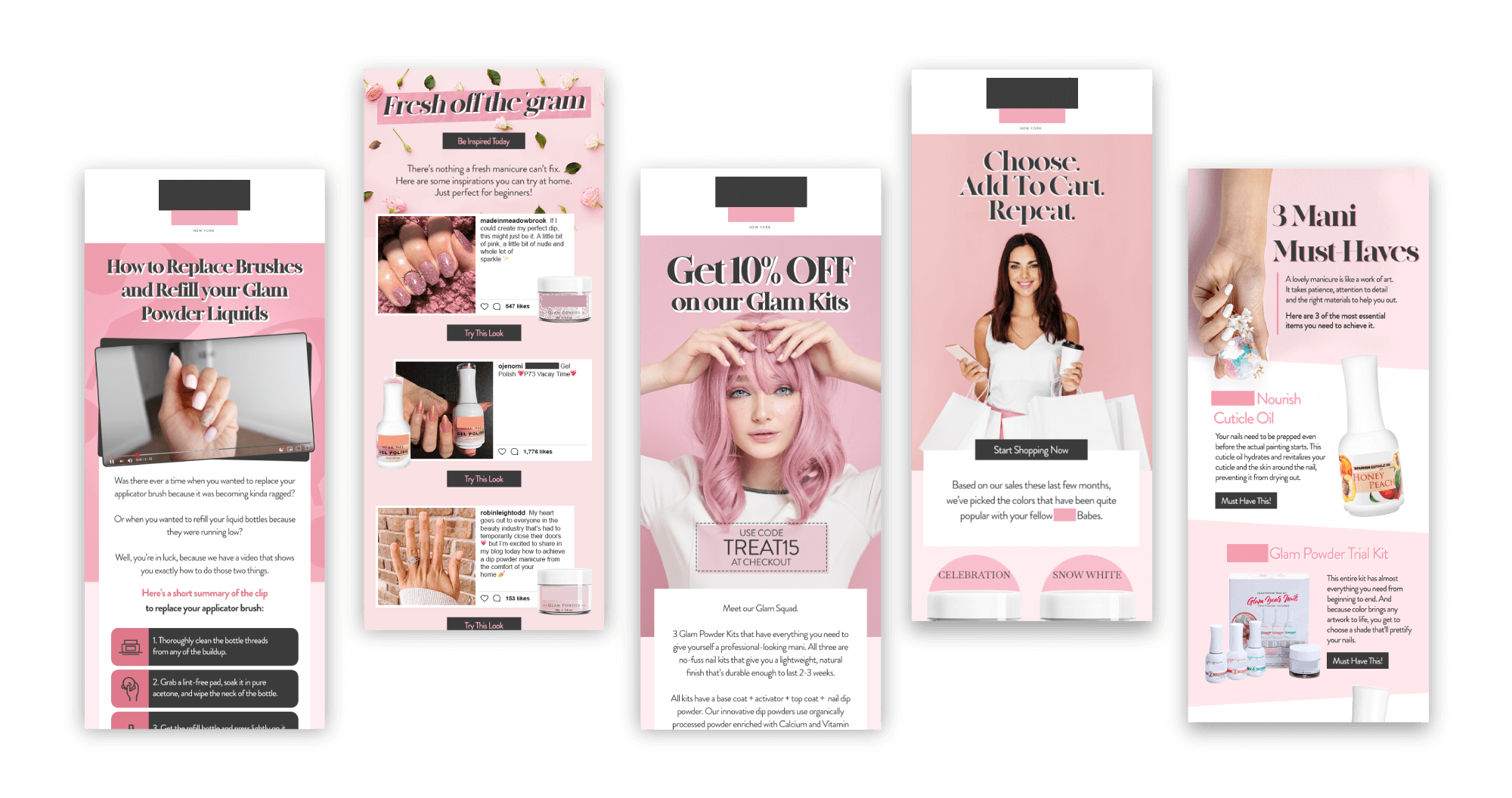
Email Revenue from Flows
Increase in Open Rates
ROI
Learn how we helped a niche beauty brand smash that milestone by reading our full case study
A particular niche ecommerce beauty brand had a mission to empower women all over the world. They aim to bring beauty and build confidence with their products. The brand offers budget-friendly, vegan and cruelty-free nail polish materials and accessories.
A niche eCommerce beauty brand approached us with the hopes of creating a solid revenue-generating email marketing strategy. This brand specializes in empowering women around the world by delivering beauty and confidence through their products.
To fully realize that goal, they needed an effective email marketing framework. However, it was within this plan where they noticed some critical wrinkles that needed ironing out.
Our client was suffering from low conversions generated from their existing marketing funnel framework. A low conversion rate could mean that regardless of high traffic flow to your online store website, you’re only making a fraction of sales or returns from all those people.
Aside from low conversions, their open rates were at a low 9% while their revenue from their automated email flows was only peaking at 6%. For perspective, the benchmark for email revenue share eCommerce brands should be aiming for is 30%.
We traced these problems to the following causes:
Along with only having basic flows, these flows weren’t optimized according to available data. The lack of advanced flows also meant they weren’t able to effectively address customers’ needs who are in varying stages of the customer journey.
In other words, they weren’t sending out any campaigns—revealing a huge gap in their revenue flow.
With only the basic flows set up and no campaign activity, our client wasn’t able to utilize the potential growth that would stem from targeting various segments.
Despite their issues, all it took was the formulation of the right strategies centered around available data. Implementing a data-driven strategy was this brand’s key to zero in on their pain points and accurately optimize their email marketing strategies to effectively address them.
What kind of data did we base this data-driven strategy on? One of the most important and crucial types of data to an eCommerce brand is customer data. It’s knowing the preferences, online behavior, and lifestyle of your customer base that gives you the best insight as to how you can best cater your email marketing to your target customers.
As we mentioned earlier, only having basic flows in place meant they were missing out on potential revenue streams from customers at varying stages of the customer journey. They were generating only 6% from email flows—then the typical average would be 10%. Here’s a breakdown of how we implemented this action:
a. Created advanced flows to ensure all touchpoints were covered
By catering to customers throughout the customer journey, our client would be able to put their products in front of a broader range of their customers, regardless if these customers were new, existing, or highly engaged.
b. Optimized the existing flows to align with our email strategy framework
Optimizing their flows included using our tried and tested subject lines and designs, as well as ensuring that the flows were always consistent with each rebranding initiative of the brand. This included adding more cross-sell opportunities within the existing flows to increase purchase openings.
c. Intensive and regular AB testing for consistent fine-tuning
This is where customer data plays a large part into the whole email marketing framework. One of the tests we did based on customer preferences was which visual media formats they preferred (GIFs vs. Static images and Long vs. Short Hero Images).
To help our client strengthen their relationship with their tribe, we crafted a content calendar with the aim of nurturing and engaging their current contact list. Here’s a quick breakdown of what we did:
a. We created on-brand email templates that helped make our client a household brand in customers’ inboxes.
b. We sent campaigns on a regular basis using a mix of social content, user-generated content, and product upsells. This helped keep their customer base engaged.
c. We really leveraged the existing content that they already had. This included reviews from their buyers, aside from the usual user-generated content and social proof.
Using our Chronos standard segments, we were able to strategically target engaged subscribers and slowly increase their sending size over time. At the same time, creating segments that focused on the level of engagement of subscribers had animpact on improving overall deliverability.

Let’s discuss how we can help your eCommerce business thrive! Book a call today to discover the power of lifecycle and retention marketing for long-term growth.
Book a call
Get our latest blogs direct to your inbox
45% of store revenue, initially 27%
31% of store revenue, initially 23%
14% of store revenue, initially 4%
221,055 as of december 2022, initially 100,335
Calming Blanket wanted to increase their 27% email revenue to 35%. Chronos Agency helped them not only reach but surpass their initial goal through the use of—
Advanced segmentation is a must-have for any business looking to improve their email revenue.
Frequent A/B testing is key to keep your campaigns updated with customers’ ever-changing needs and preferences.
Mobile-friendly design for your campaigns should be a standard to cater to customers viewing your emails via their smartphones and other mobile devices.
Set up a comprehensive segmentation strategy and follow through with profile criteria when sending specific emails.
Lifecycle marketing is a much larger iceberg than you think. It’s more than just slapping together two different strategies and forgetting about it. It requires a dedicated team who’s learned the language of customer data and in turn translating that into a game plan.
Chronos Agency has dedicated 5 years of its existence decoding the customers’ minds of over 400 brands. And now, we want to share what we’ve learned with you so you too can rack up the 20% to 30% revenue boost our past partners have reaped.
Let’s create a tailored retention strategy to grow your CLV and scale your brand month-on-month. Book a free call with us to receive:










